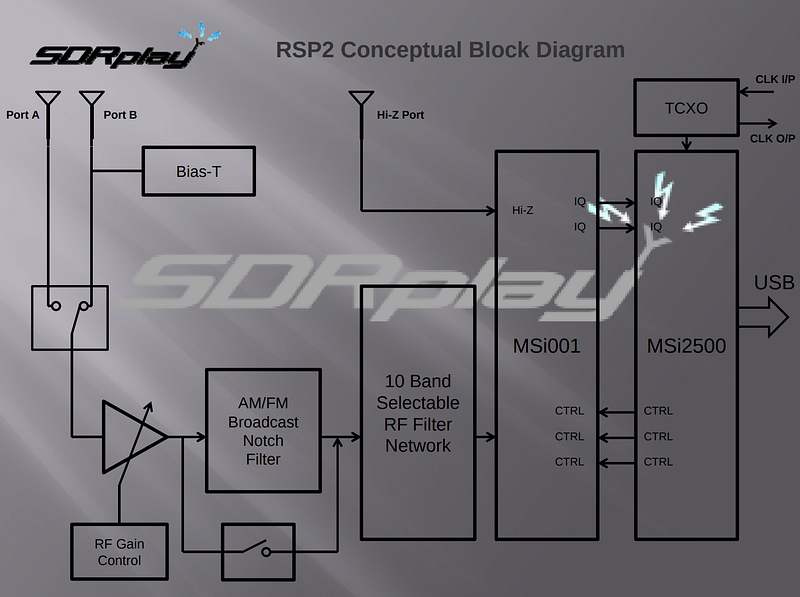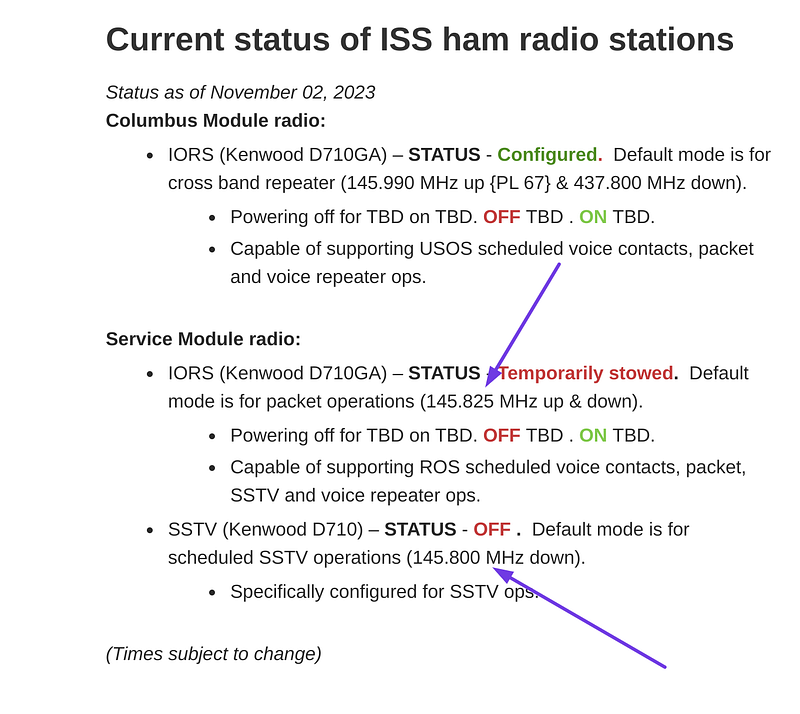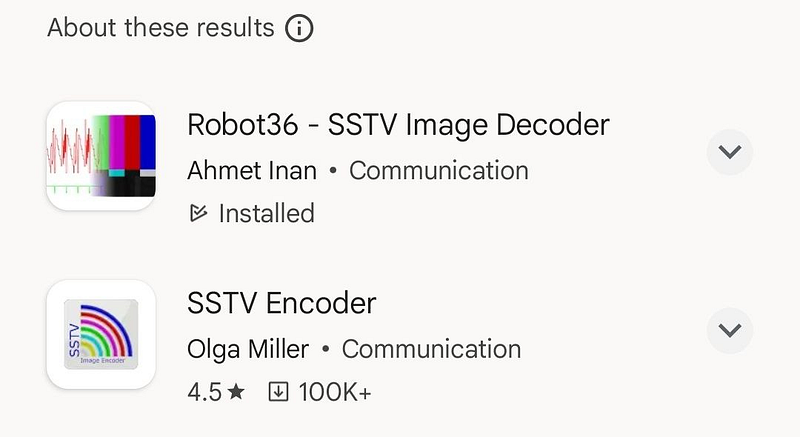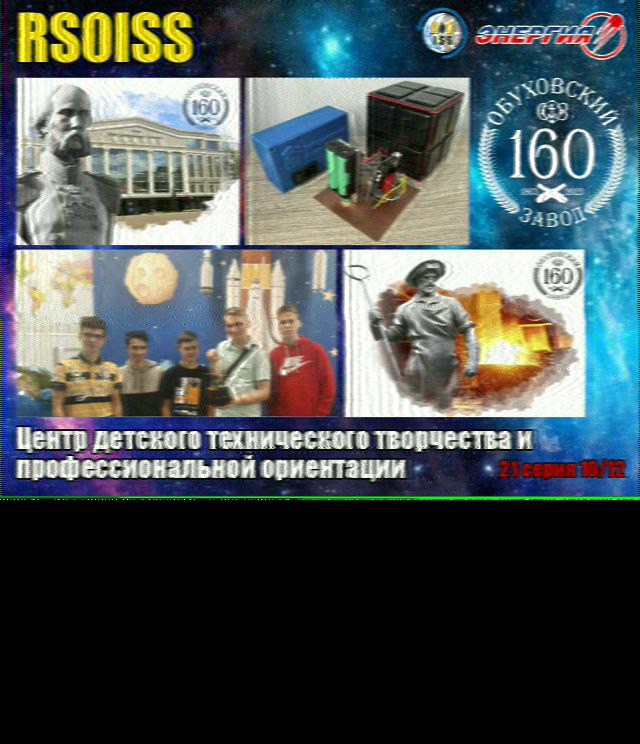Capturing Signals from the International Space Station
Written on

Capturing Slow Scan Television Signals from Space
All signals referenced here are available on YouTube. Although the event has concluded, you can replicate these exercises by utilizing the recorded signals and processing them with your preferred decoder. The ISS often has transmissions active when it passes overhead, so feel free to give it a try—you might see something interesting!
As part of our new series, Radio Hackers, we explore various activities possible in space utilizing current infrastructure. While some of these endeavors might necessitate licenses and advanced ground stations, we aim to emphasize activities accessible to intermediate users. Our approach allows individuals to engage at their own pace, focusing on persistence and enthusiasm rather than budget constraints or technical expertise.
In this spirit, we will delve into a relatively straightforward task that anyone with some spare time can undertake. If you don’t possess an SDR system, you can still use a WebSDR receiver or directly decode the uploaded signals we’ve made available for experimentation.
Although the process may seem daunting, it’s one of the easiest ways for newcomers to begin. By the end, you’ll have intercepted and decoded signals from a transmitter orbiting approximately 350 km above Earth, traveling at around 27,000 km/h. This accomplishment is certainly notable!
The Activity
Recently, while browsing online, we discovered that the amateur radio payload aboard the International Space Station was transmitting Slow Scan Television signals. Although this format is vintage, originally utilized during the Apollo missions, it remains relevant today due to its efficiency in transmitting images.
Typically, space communications require some experience, but the 2-meter downlink of these transmissions is easy to decode, making them an excellent choice for signal interception as you hone your skills. Let’s explore a few reasons why this is the case.
First, this is a receive-only activity, which means you don’t need an amateur license to participate. It’s completely legal to intercept these signals without any obligation to transmit or send a signal back.
Second, these transmissions occur on the 2-meter amateur band, centered around 145 megahertz (145.800 MHz). While the Doppler effect does impact orbital signals in this band, it is less noticeable, simplifying the process during transmission.
Lastly, the ISS is equipped with a high-quality radio payload, ensuring that signals are typically strong and clear for most of the pass, provided your horizon view is adequate. Very High Frequency signals perform remarkably well when there’s minimal interference along the path.
Requirements
The requirements for this activity are quite simple. You will need:
- A radio receiver capable of operating at 145 megahertz. An RTL-SDR is ideal for this purpose.
- An antenna tuned to this frequency range. We will be publishing an article on antenna design shortly, but in the meantime, you can find various straightforward designs online. If you’re using the RTL-SDR dongle, the standard antenna will work, although a more efficient design may yield better results.
- A device to run your SDR and decode the transmissions.
- A satellite pass predictor, which can be an app or a web-based tool like this one.
For this exercise, we utilized an SDRplay RSP2pro receiver connected to a Discone antenna, feeding into a Linux machine running SDRConnect software. Gpredict was also installed to manage orbital predictions and automatic frequency adjustments.
The RSP2 is a wideband receiver capable of capturing signals from 1 kHz to 2 GHz. It has built-in filtering, supports three separate antennas, and boasts greater sensitivity than RTL-SDR devices while effectively rejecting out-of-band signals.

However, the SDRplay is a receive-only device. While this makes it less suitable for radio hacking, its price, sensitivity, and broad reception capabilities make it a valuable tool for signal interception.
The Next Steps
Now that we understand our equipment, we can plan our interception. For this purpose, we’ll assume you already have a functioning SDR system or receiver paired with an appropriate antenna.
To successfully capture our orbital SIGINT target, we will need to prepare a few items. First, we need the orbital data to determine when and where to aim our antennas. Second, we need frequency information to set our receivers correctly. Let’s start with the frequency details.

As mentioned, the ISS features a comprehensive amateur payload with multiple transmitters operating in different modes at various times. By the time this article is published, SSTV events may have concluded, but keep an eye out as they tend to occur more frequently than expected. You can find status updates here.
SSTV transmissions can be found on 145.800 MHz, while packet radio signals are nearby on 145.825 MHz. Additionally, there’s a voice repeater transmitting on 437.800 MHz, but for today’s exercise, we will focus on the 145.800 downlink. These transmissions utilize Frequency Modulation (FM) and have a relatively wide bandwidth.
Next, let’s review the orbital information. Your software should be easy to set up, so we’ll outline the essential details rather than provide a step-by-step guide.
There are three crucial pieces of information relevant to anything in orbit: where it’s coming from (AOS), where it’s headed (LOS), and precisely how high above the horizon it will be (TCA). These concepts are vital for space communications, so we will break them down further. For our hypothetical pass, the satellite will approach from due south and leave toward due north, simplifying our tracking process.
AOS
This will provide the approach vector for the satellite, typically expressed in degrees. For our satellite coming from the south, we would expect to see it at 180 degrees.
TCA
This denotes the time of closest approach during the orbital pass. In our example, this occurs when the satellite is directly overhead. This will also be noted in degrees, so in this case, it would be 90 degrees elevation.
LOS
This indicates when the satellite vanishes over the horizon away from us. Similar to AOS, it is a calculated bearing; for our pass, LOS would be at 0 degrees.
Given that our satellite orbits the Earth in a circular path, it’s crucial to understand one last aspect. As it transitions through AOS, reaches TCA, and then disappears at LOS, it will arc across the sky, rising and falling relative to your position. This movement can significantly impact signal strength and clarity. While it may be less critical for omnidirectional antennas that come with inexpensive SDR dongles, directional antennas and proper azimuth calculations yield the best results. Lower elevation passes closer to the horizon will have weaker signals, meaning effectively capturing these signals will require additional effort on your part.
The Capture
As we prepare for our capture, it’s important to keep things organized as our target approaches overhead.
First, we will tune our receiver to the downlink frequency of 145.800 MHz (FM MODE) and adjust the squelch to allow weaker signals to break through the noise. Be cautious with your computer volume, as the audio level will increase when the ISS is within range, even if the signal isn’t clear. This phenomenon is referred to as the noise floor, and as you gain experience, you will begin to notice this before actual signal transmissions occur.
We should also record our pass, providing an opportunity to focus on capturing a clear signal. You can use a mobile phone or a plugin that integrates with your SDR. Our chosen software, SDR Connect, has a built-in recording feature.
We recommend visiting our YouTube Channel before the pass to listen to the transmission beforehand. This will help you understand what a clear pass should sound like, making it easier to track the ISS yourself.

Once you’ve captured your signal, it’s time to decode it. How this works will depend on the system you’re using. On a computer, you can utilize FLDIGI or MMSSTV, while Android and iPhone users can opt for the Robot SSTV Decoder. Using the decoder is straightforward; simply hold your phone's microphone up to the speaker as the signal plays, and you’ll start seeing the frame decode line by line.
If you’re not participating in the exercise but still want to view the decoded image, you’re in luck—we’ve included a copy of the image for those not joining in. For those who are, your image should closely resemble this.

We’ve also provided a second capture that wasn’t as clear as the first. This serves to illustrate the effects as the station moves through its orbital pass. The green lines in this image represent “noise” where the emitted signal is fading. As we capture audio, the goal is to minimize this noise level to achieve a clear Signal-to-Noise ratio for an effective decode.
In Closing
As we wrap up today’s article, it's vital to keep a few considerations in mind.
Firstly, like any skill, calculating orbits, setting up, and locating the satellite in the sky is directly linked to experience. Your first attempt may feel chaotic, with arms and antennas flailing, but it's crucial to remember that it won’t always be this way.
As you refine your skills and adapt to capturing signals from orbit rather than the ground, you’ll find it easier to track the satellite and keep your antennas properly oriented. You will also notice your ability to recognize the noise floor as the satellite moves through AOS and comes into range of your station.
All of these elements will simplify the process of locating your signal and, importantly, allow you to explore additional signals and devices within the space communications spectrum. A vast range of frequencies is allocated for space communications, presenting an exciting array of orbital signals for aspiring Radio Hackers to discover.
In our next installment of Radio Hackers, we will examine how to capture and decode digital telemetry signals from space-based assets. Be sure to have your SDR units ready and your antennas directed skyward.
Medium has recently adjusted its algorithms to enhance the discoverability of articles like this one. These changes aim to ensure that quality content reaches a wider audience, and your engagement is key to achieving this.
If you found this article insightful, informative, or enjoyable, we kindly ask for your support. Clapping for this article not only shows appreciation to the author but also helps increase its visibility for others who may benefit.
Did you enjoy this article? Support our work and join the community!
Support me on Ko-fi: **Investigator515**
Join our **Telegram* channel for exclusive updates or.*
Follow us on **Twitter* and*
We’re now on **Bluesky*!*
Articles you might like: 1. Software Defined Radio & Radio Hacking 2. OSINT Unleashed: 5 Essential Tools for Cyber Investigators
Want more content like this? Sign up for email updates **here.**